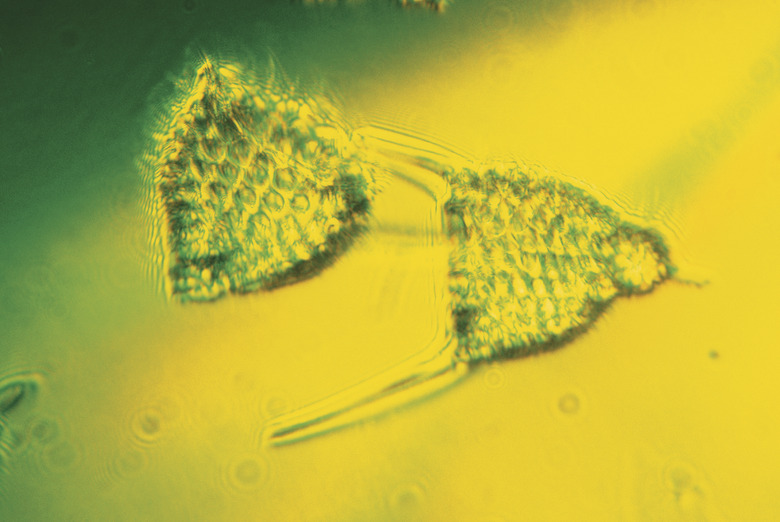General Characteristics Of Protista
Most people are familiar with organisms from the more common kingdoms according to biological classification: animals, bacteria, fungus and plants. However, another kingdom – Protista – contains some of the most interesting and diverse organisms on the planet.
TL;DR (Too Long; Didn't Read)
**TL;DR (Too Long; Didn't Read)**
Protista characteristics are extremely broad with exceptional variation among individual species of protists. All protists are eukaryotes, which means they contain a nucleus, and have sorted organelles like plastids and mitochondria. Most protists are unicellular although some are simple multicellular organisms. Protista examples include algae, molds, protozoa and slimes.
General Protista Characteristics
General Protista Characteristics
The kingdom Protista includes highly diverse organisms with a wide variety of characteristics. All protists are eukaryotic organisms, which means their genetic material takes the form of DNA contained in chromosomes within a distinct nucleus. Most protists are unicellular, or comprised of a single cell, but some protists are simple multicellular organisms. While some protists reproduce sexually, most are asexual. Most protists live in water, but some subsist in moist environments like wet soil or even inside the human body.
Protist Feeding and Locomotion
Protist Feeding and Locomotion
Protists can be autotrophic or heterotrophic. Autotrophic means the organism produces its own food either via light as in photosynthesis or via chemical interactions called chemosynthesis. Heterotrophic means the organism can not produce its own food and instead gains energy by consuming other organisms, such as plants or animals. Some heterotrophic protists feed by a special process called phagocytosis where the organism engulfs and absorbs its prey. The protists who move at will use pseudopodia for locomotion or move using flagella or cilia. Pseudopodia is a temporary, foot-like projection from the cell membrane. Flagella are whip-like appendages that resemble tails while cilia are slender, hair-like projections.
Diverse Protista Examples
Diverse Protista Examples
Because Protista is so exceptionally diverse, classification within the kingdom proves difficult for scientists, and is likely to continue changing. However, researchers generally categorize protists into five informal functional groups based on the way the individual organisms move and feed. The first group is "heterotrophs with no permanent locomotor apparatus" and includes amoebas, forams and radiolarians. The second and largest group is "photosynthetic protists," which includes diatoms, dinoflagellates, euglenoids and several types of algae. The third group is "heterotrophs with flagella" like ciliates and zoomastigotes. The fourth group is "nonmotile spore-formers" and includes sporozoans. The final group is "heterotrophs with restricted mobility," which includes slime molds and water molds.
The characteristics of protists are as unique as the members of this important kingdom. While protists aren't as well-known as animals and plants, understanding these organisms yields a fuller picture of the diversity of life on the planet.
References
Cite This Article
MLA
Mayer, Melissa. "General Characteristics Of Protista" sciencing.com, https://www.sciencing.com/general-characteristics-protista-6298286/. 20 July 2018.
APA
Mayer, Melissa. (2018, July 20). General Characteristics Of Protista. sciencing.com. Retrieved from https://www.sciencing.com/general-characteristics-protista-6298286/
Chicago
Mayer, Melissa. General Characteristics Of Protista last modified August 30, 2022. https://www.sciencing.com/general-characteristics-protista-6298286/
